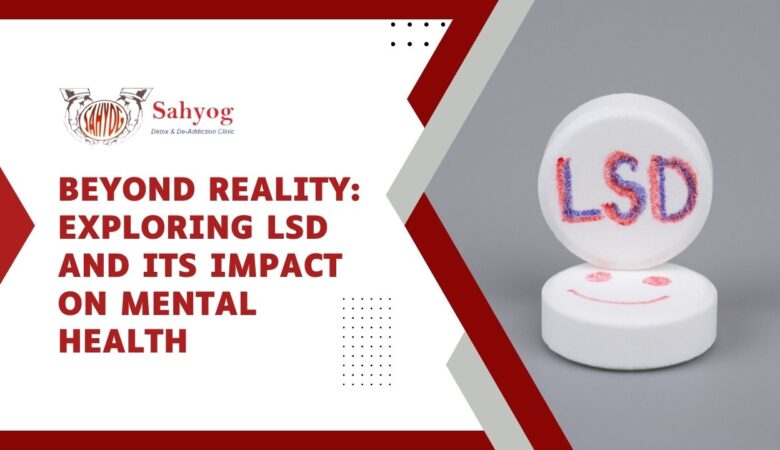Seasonal Affective Disorder (SAD): Beyond the Winter Blues
Feeling a little down as the days get shorter and the nights grow longer? You’re not alone. Many people experience a dip in their mood during the colder months, but for some, it goes beyond just feeling a bit blue. Seasonal Affective Disorder (SAD) is a real condition that can cast a dark cloud over your life when winter rolls around. But fear not! In this blog post, we’ll delve into the depths of SAD and shed light on its symptoms, causes, treatments, and even ways to prevent it from taking hold. So grab a cup of hot cocoa and prepare to banish those winter blues once and for all! What is Seasonal Affective Disorder (SAD)? What is Seasonal Affective Disorder (SAD)? It’s more than just feeling a little down when the weather turns chilly. SAD is a type of depression that follows a seasonal pattern, typically starting in the fall and continuing through winter. While it may be tempting to dismiss it as simply “winter blues,” SAD can have a significant impact on your overall well-being. The symptoms of SAD can vary from person to person, but common signs include persistent sadness, low energy levels, difficulty concentrating, changes in appetite or weight, and even feelings of hopelessness or worthlessness. These symptoms tend to recur each year during specific seasons and can disrupt daily life activities. So what causes this seasonal slump? Experts believe that reduced exposure to sunlight plays a crucial role. The shorter days and lack of natural light affect our internal body clock (circadian rhythm) and melatonin production — hormones responsible for regulating sleep-wake cycles and mood. Additionally, serotonin levels may drop due to decreased sunlight exposure; serotonin is known as the “feel-good” neurotransmitter. While anyone can experience SAD, certain risk factors make some individuals more susceptible than others. Women are more likely than men to develop SAD, as are those with family members who have experienced depression or other mood disorders. Living farther away from the equator also increases your chances of developing this condition due to reduced daylight hours during colder months. Diagnosing SAD involves evaluating your symptoms along with their timing — typically occurring for at least two consecutive years during specific seasons without any alternative explanation. It’s important not to self-diagnose; consult with a healthcare professional who will consider various factors before determining if you indeed suffer from SAD. Now that we understand what SAD entails let’s explore how it can be treated effectively! Symptoms of SAD Symptoms of SAD can vary from person to person, but they generally follow a pattern. One common symptom is a persistent feeling of sadness or low mood that lasts for most of the day. This may be accompanied by feelings of hopelessness, worthlessness, and a loss of interest in activities that were once enjoyed. Another key symptom is changes in sleep patterns. People with SAD may experience difficulty falling asleep or staying asleep throughout the night. They may also notice increased fatigue and a lack of energy during the day. Appetite changes are another hallmark symptom of SAD. Some individuals may have an increased appetite, particularly for carbohydrates, which often leads to weight gain. Others may experience a decrease in appetite and subsequent weight loss. In addition to these core symptoms, people with SAD often report experiencing irritability, difficulty concentrating, and withdrawing from social interactions. They may also feel more anxious or agitated than usual. It’s important to note that these symptoms usually occur during specific seasons, typically starting in late fall or early winter and remitting in spring or summer. If you suspect you might be suffering from SAD, it’s essential to reach out to a healthcare professional for an accurate diagnosis and appropriate treatment options. Causes of SAD The exact cause of Seasonal Affective Disorder (SAD) is not fully understood. However, there are several factors that may contribute to its development. One possible cause is the reduction in sunlight during the winter months. This decrease in sunlight can disrupt our internal body clock, known as the circadian rhythm, which regulates sleep-wake cycles and mood. Another potential cause is a drop in serotonin levels. Serotonin is a neurotransmitter that helps regulate mood, and lower levels have been linked to depression. The reduced exposure to sunlight during winter may lead to decreased serotonin production, thus contributing to SAD symptoms. Additionally, some experts believe that melatonin plays a role in SAD. Melatonin is a hormone produced by the pineal gland that regulates sleep patterns. It’s thought that disruptions in melatonin production due to changes in light exposure can affect mood and contribute to SAD. Furthermore, genetic factors may also play a role in determining who develops SAD. Research suggests that individuals with relatives who have experienced depression or other mood disorders are more likely to develop SAD themselves. While these factors are believed to contribute to the development of Seasonal Affective Disorder, it’s important to remember that each person’s experience with SAD may be unique and influenced by various combinations of these causes. Risk Factors for SAD While anyone can experience Seasonal Affective Disorder (SAD), certain factors may increase your risk of developing this condition. One significant risk factor is being female, as women are more likely to be diagnosed with SAD compared to men. This could be due to hormonal differences or other biological factors. Another risk factor is age, with younger adults and adolescents being more susceptible to SAD than older individuals. This may be because younger people tend to have less established coping mechanisms or are still figuring out how best to manage their mental health. Living in a northern latitude or an area with limited sunlight exposure during the winter months can also contribute to the development of SAD. The lack of natural light affects our circadian rhythm and disrupts the production of serotonin, a neurotransmitter that helps regulate mood. Having a family history of depression or bipolar disorder increases your chances of experiencing seasonal affective disorder as well. Genetics play a










